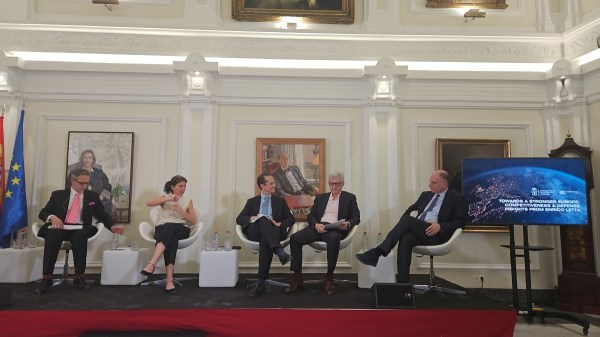One of the main priorities of the European Commission (EC) in the recent few years has been the thorough review of the EU Competition Framework. Its aim is to adapt EU Competition law to digitalization and green goals. The last public consultations, focused on the streamlining of certain aspects of merger control and the review of the Horizontal Guidelines, are good examples of this. The Commission’s Directorate (DG) Competition is making major efforts to ensure EU antitrust rules remain fit for the arisen challenges.
Nevertheless, the EC is leaving behind other actions points that are extremely important to ensure the competitiveness, technological leadership and sovereignty of the European economy. The Covid-19 crisis, the Ukrainian war and the energy dependence of the EU are putting at odds the European project towards a new path of sustainable growth and progress. At stake here is the real ability of European companies to invest to meet EU’s political goals. Therefore, new policies that ensure that European companies gain enough scale to compete in globalized and digitalized markets are key.
A new approach to competition policy
DG Competition and how it applies merger control rules is not of course the problem, but part of the solution. We believe that it is essential that DG Competition does not work in silos, but work hand in hand with other DGs, seeking for flexibility. The approach must be based on the facts and a changing global landscape. This will foster Industrial Policy, help digital and green transitions and ensure the competitiveness and sustainability of European markets.
In doing so, there is an urgent need for the EC to change the substantive approach taken so far in the analysis of horizontal mergers, together with a review of the Guidelines on Horizontal Mergers to ensure they remain fit for the challenges ahead.
Cautiously application and predictability of ICF and closeness of competition tests
Firstly, the EC should apply the Important Competitive Force (ICF) and closeness of competition tests more cautiously. This is especially important in mergers in which cost synergies and increased economies of scale provide substantial benefits to end users. The consideration of a “maverick” player should be sufficiently proved, demonstrating its capability to stand out from its competitors and not generate losses in the medium/long term.
Moreover, the EC should be consistent in the methodology and bar imposed to measure the closeness of competition between the merging parties. In addition, the EC should demonstrate the “strong probability” of a “Significant Impediment to Effective Competition” (SIEC), instead of the “most likely outcome”.
An analysis of non-quantitative effects that looks at the long term
Secondly, the EC practice so far has mainly been focused on the analysis of short-term price effects, as the main source of evidence for the impact on consumers. For instance, with the use of calculations such as upwards pricing pressure (UPP) tests. This approach can easily trigger competition concerns in investment-intensive industries, such as in telecoms.
On the contrary, an analysis focused on a longer timeframe of non-price effects is needed to take into consideration other quality improvements. Some of the effects to be studied that are not price related are innovation, quality, long-term cycles, investment capacity etc.
A rethought of the methodology used to determine price effects (GUPPI test)
Thirdly, the methodology used to determine price effects after-merger (GUPPI) is static. This model disregards efficiencies brought by the merger that would significantly temper the incentives to raise prices, including in the very short term. Besides, the credibility conferred to such tool is not sufficiently backed by empirical analysis and unbalanced with the standard of proof required from the merging parties to stablish the existence of efficiencies.
A dynamic approach of merger control that enhances industrial policy
Fourthly, we understand the EC should consider Industrial policy as a factor to be taken into consideration in the appraisal of horizontal mergers. We believe that this will be particularly important in strategic industries that are essential to European sovereignty and security.
Decreasing revenues and low profitability have resulted in a large and sustained gap in telco capex per capita, compared to other high-income regions. Ultimately, that gap could translate into less network capacity and less GB of use per capita. There is evidence of the link between broadband take-up and GDP growth. Therefore, a strong European Telco sector is required to provide a solid foundation for the digitisation of EU citizens and firms.
Avoiding artificial and asymmetric competition
Fifthly, some proposed solutions could jeopardize the sustainability of the European telecoms markets. This is the case of the creation of artificial and asymmetric competition by forcing the merging parties to commit for remedies aimed at allowing new market entrants in already very competitive markets. The existing ex-ante regulation has ensured and facilitated market entry. This, in combination with a support to an artificial market structure has driven the profitability of the industry to levels close or below WACC, hindering future investments.
Moreover, there are cases where those remedies have been used by the new entrants just for speculative purposes. This has led to the sale of assets obtained as remedy takers instead of using them to become a solid competitor. From our point of view, it has reduced the effectivity of those remedies after the transaction.
Broader consideration of efficiencies at the long-term, with a realistic standard of proof
Lastly, we believe the Horizontal Merger Guidelines should be reviewed to allow a broader consideration of long-term efficiencies with a realistic standard of proof for demonstrating such efficiencies.
In our experience, we are of the view that the EC does not look at a sufficiently long timeframe when considering efficiencies that may arise from a merger. Industry characteristics and investment cycles should also be considered in this process.
On the contrary, the EC should consider all the efficiencies thanks to the synergies created by the merged entities, delivering innovation and improvements in quality and fostering companies’ capability to invest. These efficiencies are, among others: cost efficiencies (e.g., avoidance of network duplication), quality efficiencies (e.g., increased spectrum efficiencies), roll-out efficiencies (e.g. increased rollout speed) and out-of-market efficiencies (e.g. reduced energy consumption).
We would respectfully request the EC to take these recommendations into consideration within an in-depth review of the substantive assessment in the EU merger control. In this way, stronger EU industrial policies can be fostered to create a robust framework for a sustainable, independent and resilient European Single Market.











